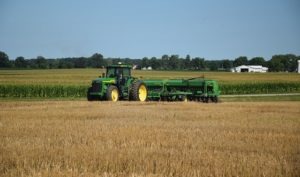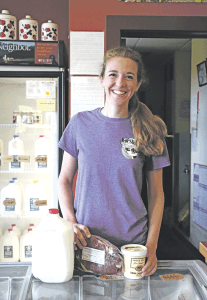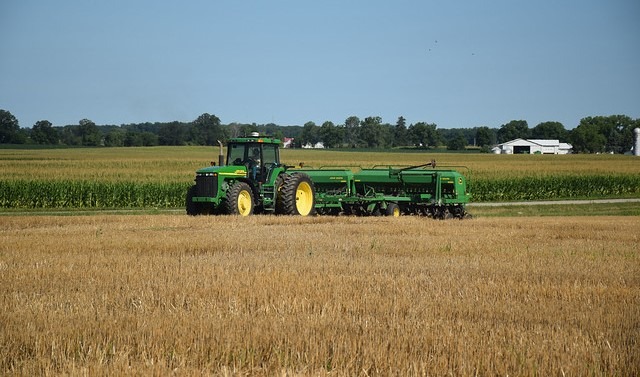US agriculture needs a 21st-century New Deal
If the concept of parity sounds quaint, that’s because it is. Farmers first achieved something like parity in 1910-1914, just before America entered World War I. During the war U.S. agriculture prospered, financing flowed and land speculation was rampant.

Those bubbles burst with the end of the war. As crop prices fell below the cost of production, farmers began going broke in a prelude to the Great Depression. Unsurprisingly, they tried to produce more food to get out of debt, even as prices collapsed.
President Franklin Roosevelt’s New Deal included programs that directed public investments to rural communities and restored “parity.” The federal government established price floors, bought up surplus commodities and stored them in reserve. It also paid farmers to reduce production of basic crops, and established programs to prevent destructive farming practices that had contributed to the Dust Bowl.
These policies provided much-needed relief for indebted farmers. In the “parity years,” from 1941 to 1953, the floor price was set at 90% of parity, and the prices farmers received averaged 100% of parity. As a result, purchasers of commodities paid the actual production costs.
Dairy Crawl – A passport to promote dairy farmers & farms
 According to Denise Barstow, the driving force behind the Dairy Crawl, it was held “to let the public know that there are dairy farmers right in their backyard and that regardless of size, shape, methods, practices and diversification, they are struggling. We farmers have a history that goes back generations, and that history includes each other. The reason we have been successful is because there are other farms around. A community of farms creates a great support network, keeps more land open, gives us a louder voice for our legislators to listen to and it makes it more worthwhile for the milk truck, grain truck, tractor salesman, other agricultural resources, etc., to come to us. There’s a common misconception that farmers are competing with each other – especially in the dairy industry, with how cooperatives and pricing are set up. It’s in our best interest to support each other. It doesn’t matter where you shop; when you support one farm, you likely support another.”
According to Denise Barstow, the driving force behind the Dairy Crawl, it was held “to let the public know that there are dairy farmers right in their backyard and that regardless of size, shape, methods, practices and diversification, they are struggling. We farmers have a history that goes back generations, and that history includes each other. The reason we have been successful is because there are other farms around. A community of farms creates a great support network, keeps more land open, gives us a louder voice for our legislators to listen to and it makes it more worthwhile for the milk truck, grain truck, tractor salesman, other agricultural resources, etc., to come to us. There’s a common misconception that farmers are competing with each other – especially in the dairy industry, with how cooperatives and pricing are set up. It’s in our best interest to support each other. It doesn’t matter where you shop; when you support one farm, you likely support another.”
10 Crazy Facts About Ice Cream You Didn’t Know
Vanilla, chocolate, moose tracks and more! Whatever your favorite scoop is, ice cream is pretty amazing. In honor of National Ice Cream Month, here are 10 crazy facts about ice cream you didn’t know:
Chobani CEO: America is failing its dairy farmers
This program alone won’t provide the relief farmers all over the country need. Ultimately, we need a better coalition between the government and private sector. But it is a small step from the private sector with a big message: The future of milk — and the wellbeing of dairy farmers — matters to all of us.
Walmart’s Super-Sized Impact on the Food System
Walmart drives out local competitors by selling goods at a loss, relying on Wall Street backing and revenue from other stores to make up the difference. As the largest U.S. food retailer in history, Walmart also leverages its unprecedented size to force suppliers to accept lower prices and pay extra fees, short-changing workers and farmers along the supply chain.
The U.S. has laws on the books that prohibit this type of supplier intimidation and predatory pricing. But over the past 40 years, federal agencies simply stopped enforcing them, allowing Walmart and other retailers like Amazon to crush their competition, bully suppliers, and further expand.
The Wasteful Truth Behind Going Vegan
The problem with that first argument is that cattle are used for many things beyond their meat. Here is a short list of some of the things we are able to use cattle for: medicine, imitation eggs, anti-aging cream, dyes, ink, adhesives, minerals, plastics, pet food, plant food, shampoo, conditioner, emery boards, wallpaper, plywood, lamination, fertilizer, glass, charcoal, instrument strings, hormones, vitamins, enzymes, cosmetics, air filters, felt, insulation, gelatins, flavoring, gum, candles, detergents, deodorant, perfume, oils, cement, chalk, fireworks, linoleum, antifreeze, rubber, and on and on.
So unless you are not using ANY products that contain animals. Which is next to impossible. You are not truly a vegan. So an animal is still dying to provide for you. Except instead of using the entire animal, you are wasting most of that animal. That animal that gave it’s life. And you are wasting it. That would be like harvesting a whole field of lettuces and only eating one head of lettuce and throwing out the rest. It doesn’t make sense.
Almonds don’t lactate: Farmers call on FDA to do its job
“FDA’s longstanding inaction on enforcing its own standards of identity is perpetuating the marketing of products using milk and dairy terms when those products don’t match the nutritional content of the dairy products they are imitating,” said Jim Mulhern, president and CEO of NMPF. “Dairy farmers have never called for bans on fake-food competitors, nor have they called for market censorship. They do want the FDA to enforce its own rules defining what a product is and what it isn’t, in keeping with similar standards enforced in other countries around the globe. The clock is still ticking. We are not going away.”
The Best Beers To Pair With Ice Cream, According To Brewers
As if we needed another reason to grab a pint of our favorite ice cream and hunker down with some friends and a spoon, July 21st is National Ice Cream Day. To celebrate, we wanted to find a way to pair ice cream with beer. Sweet and savory. Dessert with a drink. Makes sense, right? But we needed to come correct. Ice cream is serious business — no half-stepping allowed.
To be sure that we offered up legit flavor combos, we asked some of our favorite brewers to tell us what beers they like to pair with their favorite ice cream flavors. As usual, their answers did not disappoint.
